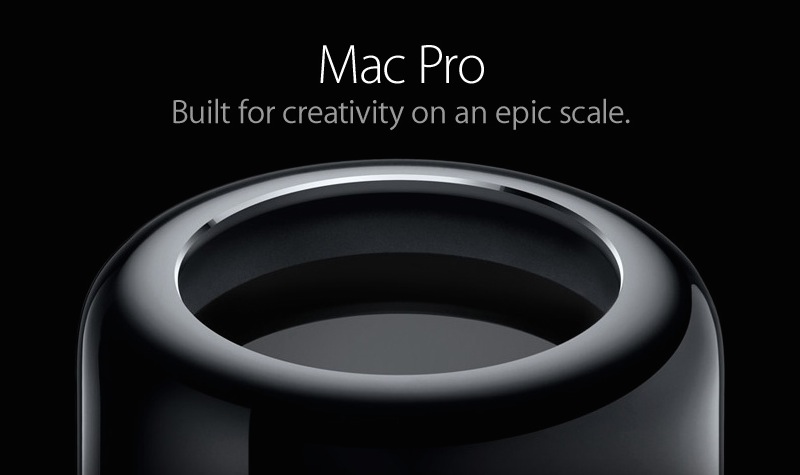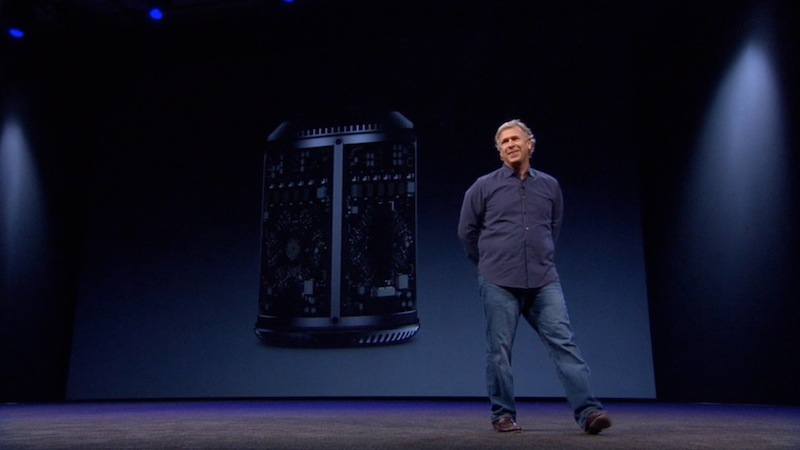CPU to 12 coreThe processor can be upgraded or did you replace the entire machine?
Ram to 64Gb
SSD to 1TB
Clocks 7700 MC on Geekbench.
base iMac Pro clocks 7900.
Not bad for a $969US machine. iMac Pro’s still hover around $2600.
CPU to 12 coreThe processor can be upgraded or did you replace the entire machine?
Same. Works great for 4K DaVinci! (Upgraded to 12 core, 64gb ram and a better ssd).Still using it today... professionally even. It's a bit slow single core, but other than that... going strong.
I bought mine from a production house that did a british composers 8 hour album on it. Love the power these little beasts have.I saw an Oscar winning movie edited on a room full of trash cans. I even got to watch the final edit before the director 😂 it was so late at night.
A computer is a tool. Unless it's distractingly ugly I couldn't care less about what it looks like. Bland is good.Loved this design, hope they dare to come up with creative designs like this for new products again. Current Apple design is becoming bland, all variations of the same thing.
Yes. I still use mine daily, quad core 3.7 Ghz, that I upgraded to 64 Gb of RAM and doubled the SSD, 3 4K monitors.There were actual people who bought that. Oh well.
Pretty cheap now at least for a base model. Got the quad core model with 32gb ram for like $300 on eBay. Fully functional one year warranty but more a collectors item as I just thought it looked it cool.I looked for a used one some years ago and prices were still sky-high. I guess for some it’s been a perfect machine.
The iMac G4? I loved mine! The design had way better thermals than the subsequent slapped-on-the-back-of-the-display designs and the ergonomics of the display were great.This was as much of a dead end as the PowerMac G4 Cube and the iMac with the nodding head.
Three of the coolest looking Macs. Maybe not the most powerful, but pretty darn cool! Really wish they'd re-release all of them with updated specs, and a bit better expandability/upgradability.I ordered the 8 core with dual D700 as soon as it was released and got it in mid-2014. I thought it was beautiful and reminded me of the G4 Cube. Now it sits on my shelf next to my 20th Anniversary Mac.
You're either lying or haven't seen a PC in decades. Beige machines haven't been a thing in like 20 years.At least they were trying and didn’t produce a beige machine like the other mob do.
Probably because a) the Thunderbolt peripheral market has matured in the 10 years since the Trashcan (there was nothing much to plug into all those TB2 ports in 2013), b) the Studio is aimed at a different market segment (prosumers and creatives who consider a computer to be an appliance rather than a servicable piece of equipment as demanded by the Mac Pro's market space), and c) it offers a compelling amount of power for a relatively good value, especially compared to the rest of Apple's desktop range.Why isn't the Mac Studio more controversial though? It's quite ugly, not very upgradable and even loud for a Mac.
How do you get them to 60Hz? I found 30Hz unusable, never got 60Hz to work and since the monitor doesn't have a free HDMI port I couldn't go the active HDMI adapter route.3 4K monitors.
Exactly. And Apple didn't provide their own TB2 dock. The third party docks I tested were unreliable. I ordered my first 4k screen in 2015 and the trashPro couldn't even do the full 60Hz. I/O was a joke. Apple had every chance to improve at least the display situation with new graphics card modules, but simply never offered upgrade modules despite heavily suggesting that this modular design will be so very upgradeable in the future.there was nothing much to plug into all those TB2 ports in 2013
I love mine. Still plugging away after nine years. Has never even once had a hiccup. I think it is brilliant, for what it is. Yes, it was also overpriced, but this is Apple. I currently have 21 peripherals connected to it, and everything works flawlessly (I use it as my main controller for a music studio and photography editing studio). I plan to keep it for as long as I can justify using Monterey.
Apple launched the controversial "trashcan" Mac Pro nine years ago today, introducing one of its most criticized designs that persisted through a period of widespread discontentment with the Mac lineup.

The redesign took the Mac Pro in an entirely new direction, spearheaded by a polished aluminum cylinder that became unofficially dubbed the "trashcan." All of the Mac Pro's components were mounted around a central thermal dissipation core, cooled by a single fan that pulled air from under the case, through the core, and out the top. The fan could spin more slowly than smaller fans and keep the Mac extremely quiet, even during intense operations.
Apple announced the radically redesigned Mac Pro at WWDC in 2013. During the announcement, Apple's Phil Schiller infamously remarked "Can't innovate anymore, my ass." The comment was directed at armchair critics who pointed at the previous Mac Pro's lack of updates and claimed Apple had largely abandoned its pro user base and was out of ideas.

Phil Schiller unveiling the redesigned Mac Pro in 2013
Apple said that the new Mac Pro offered twice the overall performance of the previous generation while taking up less than one-eighth of the volume, thanks to its unified thermal core. The Mac Pro twinned Intel Xeon processors with dual AMD FirePro workstation GPUs, enabling it to deliver seven teraflops of computing power.
While the striking design was undoubtedly ambitious, users were unhappy with the way that almost all expansion had to be served externally by Thunderbolt 2 ports. Professional users who were reliant on powerful hardware could not get past the Mac Pro's lack of internal slots to add graphics cards and memory.
The result was a device that was unable to adapt to changing hardware trends. Even Apple seemed unsure how to offer a meaningful hardware update for the Mac Pro – as recently as 2019, it was possible to buy a trashcan Mac Pro from Apple, with no upgrades coming to the device during the six years since its release.
This led Apple to make a rare admission of the product's failure during a meeting with reporters in April 2017, explaining in detail why the device didn't succeed in the way it had hoped. In 2019, Apple's full mea culpa came in the form of yet another Mac Pro redesign, which took the machine back to a highly modular tower form factor with eight PCIe slots and three impeller fans.
Yet in many respects, what the 2013 Mac Pro set out to achieve – a small, powerful computer for professionals, with external expansion only – lives on and has been executed more effectively by 2022's Mac Studio.
Article Link: The 'Trashcan' Mac Pro: Remembering One of Apple's Most Controversial Designs Nine Years Later
The processor is user upgradable? Which exact processor did you use?CPU to 12 core
Ram to 64Gb
SSD to 1TB
Clocks 7700 MC on Geekbench.
base iMac Pro clocks 7900.
Not bad for a $969US machine. iMac Pro’s still hover around $2600.
Building a Hackintosh with any of the new Alder Lake or Raptor Lake processors will run circles around anything Apple has to offer. Yes, the new Intel processors do work in Mac OS. No, the OS can't distinguish between the performance vs. efficiency cores, they're all treated the same. However, when they're all firing off... the those new intel processors are REALLY fast.And don't tell me it's more work, if you can upgrade CPU, RAM and storage on a trashPro and install Ventura via OpenCore, you can put together a hackintosh.

